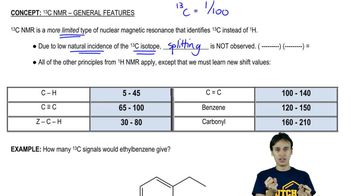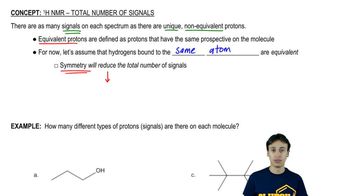Sketch the following spectra that would be obtained for 2-chloroethanol:
d. The proton-coupled 13C NMR spectrum.
 Verified step by step guidance
Verified step by step guidance Verified video answer for a similar problem:
Verified video answer for a similar problem:



 4:m
4:mMaster 13C NMR General Features with a bite sized video explanation from Johnny
Start learning